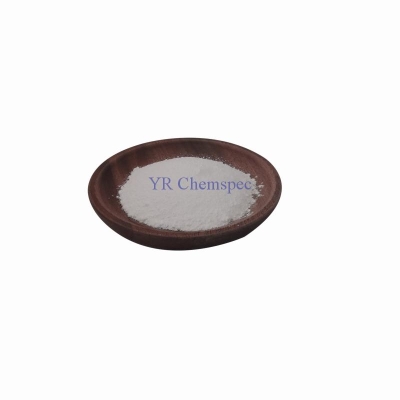-
Categories
-
Pharmaceutical Intermediates
-
Active Pharmaceutical Ingredients
-
Food Additives
- Industrial Coatings
- Agrochemicals
- Dyes and Pigments
- Surfactant
- Flavors and Fragrances
- Chemical Reagents
- Catalyst and Auxiliary
- Natural Products
- Inorganic Chemistry
-
Organic Chemistry
-
Biochemical Engineering
- Analytical Chemistry
- Cosmetic Ingredient
-
Pharmaceutical Intermediates
Promotion
ECHEMI Mall
Wholesale
Weekly Price
Exhibition
News
-
Trade Service
Most of the elements in the periodic table are metallic elements, forming metallic crystals
.
The bonding force between atoms in a metal crystal is called a metal bond
1.
Modified covalent bond theory of metal bond
1) Modified metal bond in covalent bond theory
The radius of the metal atom is large, and the attraction of the nucleus to the valence electrons is small.
These valence electrons can easily break away from the bondage of the nucleus and become free electrons, and the free electrons can move freely in the metal crystal
.
The free ions that have lost electrons combine by attracting electrons to form metal crystals
.
This is the modified covalent bond theory of metal bonds, which is similar to the atoms in covalent bonds held together by sharing electron pairs
The metal bond is essentially electrostatic attraction and has no directionality
.
Metal keys have no fixed bond energy
2) The strength of the metal bond
The strength of the metal bond is related to the number of free electrons, as well as many factors such as ion radius and electron layer structure
.
Generally speaking, metal has many single electrons, strong metal bond, high melting point and high hardness
The strength of the metal bond can be measured by the heat of atomization of the metal
.
The heat of metal atomization refers to the energy required for 1 mol of metal to become a gaseous atom
3) Explain the properties of metal crystals
Metal can absorb light in a wide range of wavelengths and reflect it again, so metal crystals are opaque and have metallic luster; under the action of external voltage, free electrons can move directionally, so the metal has conductivity; when the metal is heated, it passes through free electrons.
Collision and collision between electrons and metal ions transfer energy, so metal has thermal conductivity; metal deforms or dislocation when subjected to external force, but the metal bond is not destroyed, so metal has good ductility
.
2.
Energy Band Theory of Metal Bonds
1) Metal energy band theory
Metal energy band theory is developed on the basis of molecular orbital theory
.
According to molecular orbital theory, 2 atomic orbitals can be combined into 2 molecular orbitals: 1 bonding orbital and 1 antibonding orbital
For Li atoms, the electronic configuration is 1s 2 2s 1
.
Two representations of the Li 2 molecular orbital energy level diagram are shown in Figure 6-43
Figure 6-43 Two representations of Li 2 molecular orbital energy level diagram
The n 1s orbitals in the Li metal crystal form n molecular orbitals
.
These energy levels with similar energies form energy bands, and these n molecular orbitals are filled with electrons, so they are called full bands (Figure 6-44)
Figure 6-44 Energy band in Li metal crystal
In the Li metal crystal, n 2s orbitals form n molecular orbitals.
In the energy band composed of 2s orbitals, half of the orbitals are filled with electrons, and the other half of the orbitals are not filled with electrons, that is, the orbitals are half filled
.
Since the energy difference between the molecular orbitals in the energy band is small, the energy required for electronic transition is small, and the electron can transition to the empty orbit to make the metal crystal conduct electricity, so the energy band with the half-filled orbit is called the conduction band
.
3n 2p orbitals in Li metal crystals form 3n molecular orbitals, and the energy band composed of 2p orbitals is not filled with electrons, so it is called an empty band
.
There is no molecular orbital between the two energy bands, the energy interval is large, and it is difficult for electrons to transition, which is called the band gap
.
2) Explain the properties of metals
The electrons in the conduction band can jump into the empty orbital, so the metal conducts electricity
.
Some metal blank with partially filled band and the overlap (FIGS.
6-45), there are also equivalent to the conduction band can be electrically conductive, metals such as Be and Ca or the like
.
Figure 6-45 Overlapping of full band and empty band
If there is no conduction in the product body, and the band gap energy between the full band and the empty band E>5eV, it is difficult for electrons to transition, then the crystal is an insulator; if the band gap energy E<3eV, the electrons can pass through under the excitation of external energy The forbidden band enters the empty band from the full band to conduct electricity, and the crystal is a semiconductor
.
Electrons transition in the energy band, and the coverage of energy changes is quite wide, emitting light of various wavelengths, so most metals are silver-white with metallic luster
.
When the metal crystal is subjected to an external force, the metal energy band is not destroyed, so it has ductility
.
Related Links: The Effect of Ion Polarization on the Properties of Compounds







